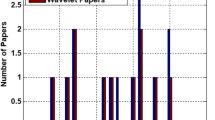Summary
Digital storage of urodynamic signals such as detrusor pressure and flowrate at a sufficiently high sampling rate (10 samples per second) to allow subsequent analysis requires considerable computer memory. A procedure for compressing these data by deleting redundant samples (the fan method of adaptive sampling) was tested. The method allows a flexible adaptation to specific hardware and a compromise between storage requirements and accuracy. In this study the number of samples required for adequate reconstruction of the detrusor pressure signal could be varied from 80% to 4% of the original number of samples by varying the average difference between reconstructed and original signal from 0.01 to 2 cm H2O. Fast components of the measurements (for example cough peaks) which were lost if a lower sampling rate or averaging was used to obtain equally low storage requirements were unaffected by this compression technique.
Similar content being viewed by others
References
Blanchard SM, Barr RC (1985) Comparison of methods for adaptive sampling of cardiac electrograms and electrocardiograms. Med Biol Eng Comp 23:377–386
DiPersio DA, Barr RC (1985) Evaluation of the fan method of adaptive sampling on human electrocardiograms. Med Biol Eng Comp 23:401–410
Gardenhire LW (1964) Redundancy reduction, the key to adaptive telemetry. Proceedings of the Nat, Telemetry Conference, Los Angeles, Sections 1–5, 1–16
Gardenhire LW (1965) Data redundancy reduction for biomedical telemetry.In: Caceres Ca (ed) Biomedical telemetry, vol 11. Academic Press, New York, pp 255–298
Mastrigt, R van (1984) A computer program for on-line measurement, storage, analysis and retrieval of urodynamic data. Comp Prog Biomed 18:109–117
Mastrigt R van (1987) Urodynamic analysis using an on-line computer. Neurourol Urodyn 6-3:206–207
Pollard, AE, Barr, RC (1987) Adaptive sampling of intracellular and extracellular cardiac potentials with the fan method. Med Biol Eng Comp 25:261–268
Regnier CH (1986) Current and future applications of computers in urodynamics. Neurourol Urodyn 5:343–371
Author information
Authors and Affiliations
Rights and permissions
About this article
Cite this article
van Mastrigt, R., Griffiths, D.J. Efficient storage of urodynamic signals by computer: application of FAN adaptive sampling. Urol. Res. 17, 57–62 (1989). https://doi.org/10.1007/BF00261053
Accepted:
Issue Date:
DOI: https://doi.org/10.1007/BF00261053




